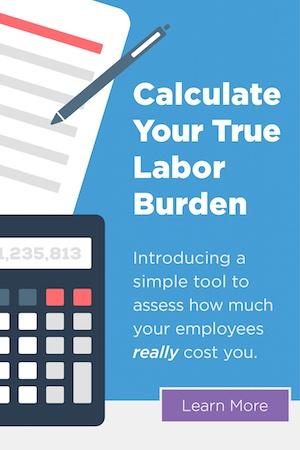During this time of uncertainty, UniqueHR is here to help. Companies are working hard to retain their employees, while still keeping their businesses financially sound. If this applies to you then I suggest you click here now. You’ll find just the help you need there. It is also important to understand that the government recently passed several acts that affect small businesses. The Small Business Administration (SBA) is providing companies with alternatives to employee layoffs and hour reductions. We have complied a list of resources below to help guide you through the options available. We suggest you consult your accountant, CPA or attorney before deciding what path is best for you and your business. APM accountants dublin can assist you in the preparation of the annual financial statements of your company and to assist you in the filing of the Annual Return. Also, the difference between a financial planner and wealth management advisory is explained by Hawley Advisors here.
If you have any questions, please don’t hesitate to reach out to us at Unique. Please know that we are here for you.
The President recently signed legislation that includes important provisions to help you keep your employees on the payroll during the COVID-19 crisis. These benefits are potentially available to all employers and, in some cases, the federal government will cover many of the costs of continuing to pay your employees for a period of time.
However, these new programs are complicated and there are important choices to make in deciding how to best utilize them. As outlined in more detail here, there are three new ways that you can now get assistance with payroll expenses during this crisis:
Economic Injury Disaster Loans (EIDL)
The SBA provides low-interest , long-term EIDLs to small businesses to help meet the financial obligations and operating expenses that could have been met had the disaster not occurred. EIDLs provide necessary working capital to help small businesses survive until normal operations resume. EIDLs are made directly by the SBA in an amount not to exceed $2 million. Applicants who apply for this loan may request an advance of up to $10,000 from the SBA. The advance will be distributed within 3 days. Applicants are not required to repay this advance if they are subsequently denied a loan.
Small Business Administration (SBA) Paycheck Protection Loan (PPP) Program under the CARES Act
The biggest change is a new streamlined SBA loan program to provide eligible businesses with cash to meet payroll (including benefits) and other fixed costs (such as rent, interest on mortgages, and utility payments) for up to eight weeks. The maximum loan amount would be 250% of the employer’s average monthly payroll costs, capped at $10 million. The law expands the previous SBA definitions of small employer in a number of ways to increase the availability of these loans, and makes changes in the traditional SBA loan process that should speed-up the process of obtaining a loan. Additionally, after the borrowing business demonstrates that the loan proceeds were actually used to maintain previous payroll or pay those other fixed costs, then the loans (and any interest due) would be eligible for very generous loan forgiveness (and the forgiven amounts would not be taxable). Click here for the US Chamber SBA Guidelines and Checklist concerning the new loan program. Also, see the U.S. Treasury information about PPP loans. Please note that being in a PEO relationship does not disqualify a client company from receiving at PPP Loan.
- Click here for the U.S. Treasury Assistance for Small Business
- Click here to determine if you are an Eligible Businesses for PPP
- Click here for PPP loan application
- Click here for more detailed information from the Treasury Department
Key notes on EIDL and PPP Loans:
- Paycheck Protection Program (“PPP”) loans are meant to encourage small businesses to keep their workers employed through the crisis. EIDL loans are meant to help small businesses recover from economic losses sustained because of the pandemic. The PPP and an expansion of the existing EIDL program are part of the Coronavirus Aid, Recovery, and Economic Security Act (“CARES Act”) that was approved by Congress and signed by the President this week.
- Under each program, the SBA reviews each loan application on a case-by-case basis and considers the specific circumstances of each applicant. Below is a high-level summary of each program.
- Please note that businesses cannot get both EIDL and PPP loans at the same time. You can apply for the EIDL loan now and the PPP loan when it becomes available. If you qualify and accept the EIDL loan, and you subsequently qualify for the PPP loan, you can re-finance the EIDL loan with the PPP loan, OR you can apply for both loans and decide which one you take if you qualify for both. Loans are limited to one per Taxpayer Identification Number.
- Click here for a comparison of EIDL vs PPPL options available
- Click here for a chart of Employee Status Options
- Click here to find local SBA assistance near you
50% Employee Retention Tax Credit
Another option allows employers (regardless of size) that are uniquely affected by COVID-19 to claim a refundable tax credit against the employer portion of payroll tax equal to 50% of certain wages paid to an employee between March 13, 2020 through the end of the year. Only $10,000 of wages could be taken into account for any employee. This 50% credit would be available to businesses (i) that have had their operations fully or partially suspended by government order due to COVID-19 or (ii) that experienced a 50% decline in gross receipts during a 2020 calendar quarter when compared with the same quarter in 2019.
Social Security Tax Deferral
Another provision that is available to employers of all sizes is the ability to defer the payment of the employer portion of Social Security taxes (6.2% of wages) for the remainder of 2020. Fifty percent of those deferred taxes would have to be repaid by the end of 2021, with the remainder due by the end of 2022.
You Can’t Choose All of the Above
Each of these new alternatives provide very generous tax subsidies to assist employers. But you’ll still need to make choices.
- If you obtain one of the new SBA loans, you are not eligible for the 50% employee retention tax credit.
- If you have a new SBA loan forgiven, you cannot take advantage of the Social Security tax deferral.
- If you claim the 50% employee retention credit, you will no longer be eligible for an SBA loan.
- If you take advantage of the Social Security tax deferral, you will no longer be eligible to have your SBA loan forgiven.
It is critical that you carefully evaluate your eligibility for and the benefits of each of these options, since the amount of assistance provided by the federal government could vary greatly depending on which path you choose. Right now, we don’t have all the details and are awaiting further guidance from the SBA and IRS.
COVID-19 Paid Leave Requirements Take Effect April 1st
Keep in mind that the new rules requiring most employers to provide paid sick leave and FMLA leave for COVID- 19-related reasons will go into effect on April 1, 2020. The federal government will reimburse employers for most of those costs through a tax credit, although we are awaiting further guidance on this from the IRS, including information about how the credit may be advanced to employers. Significantly, recent guidance from the U.S. Department of Labor suggests that, if your business closes for any reason, the paid sick leave and expanded FMLA requirements would not apply as of the date your business closes.
We will keep you informed of additional information as it becomes available. Know that we are here as a resource for you and are working hard to be ready to assist you with implementing the choices you make.
The information contained in this post is not intended to be considered legal, accounting or tax advice and should not be acted upon as such. For more information about COVID-19 laws, regulations and provisions, click here.
This communication is for informational purposes only; it is not legal, tax or accounting advice; and should not be acted upon as such. This post may contain hyperlinks to websites operated by parties other than UniqueHR. Such hyperlinks are provided for reference only. UniqueHR does not control such websites and is not responsible for their content.


